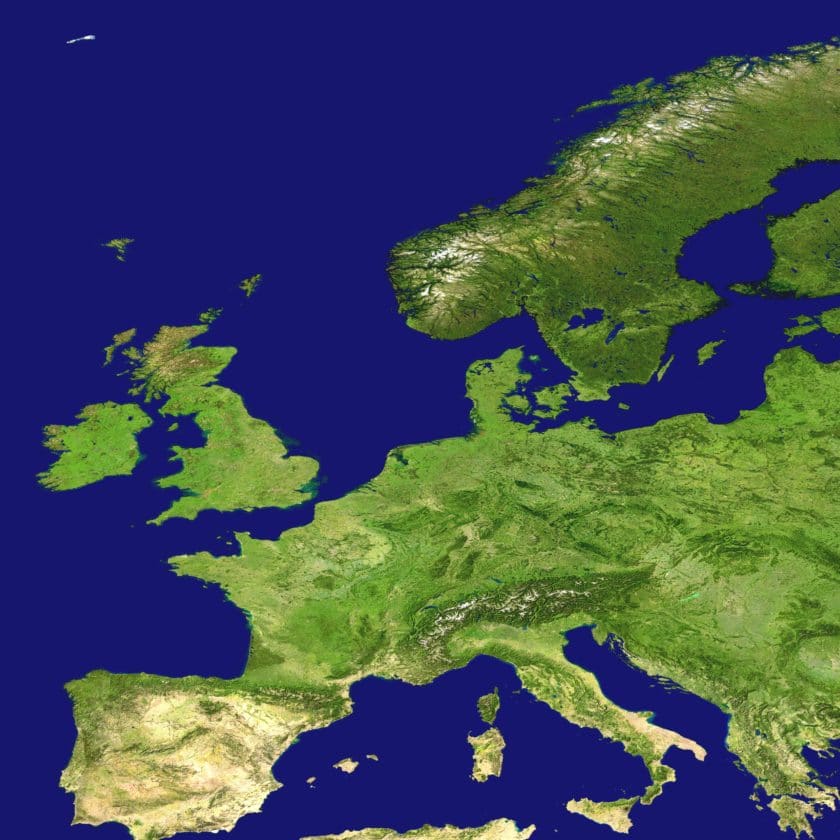Darius McDermott, managing director, FundCalibre, looks at factors underpinning what may be a European recovery.
There always seems to be trouble around the corner for European equities. Ever since the Global Financial Crisis, they have been burdened by one challenge after another; first it was fiscal austerity, then sovereign debt, the overhang of Brexit and now a global pandemic.
The bottom line is, European equities have lagged many of their counterparts, particularly the US, for the best part of 15 years. But could this be about to change? I recently read that the last time we had a prolonged period of global growth was between 2003 and 2007 – a period when European equities not only outperformed global and US equities, but European value fared even better*.
Halfway through 2021 and Europe’s challenges have continued to be highlighted. At a time when its peers in the UK and the US have been praised for the vaccine efficacy, Europe has been blighted by “vaccine nationalism”, as countries scramble to look after their own – not the best advert for the European Union.
But there is optimism with economic data across Europe coming in considerably better than expected. In June, the European Central Bank’s projections for the eurozone economy were upgraded with growth pencilled in at 4.6 per cent this year, and 4.7 per cent in 2022, up significantly compared with its previous March forecast of 4 and 4.1 per cent, respectively**.
I recently spoke with GAM Star Continental European Equity manager Niall Gallagher, who says Europe’s pace of recovery has been stronger than expected, indicating that he expects a fairly serious rebound across the remainder of 2021.
Many expect the region to push on from here – as markets like the US and the UK move from an early-to-mid cycle, Europe could well be the place to be, given the slow vaccination response has delayed the recovery. Europe is also tied to global earnings more so than many of its peers – which should aid a recovery as we return to the “new normal”.
However, there are three specific areas where I feel the longer-term prospects for Europe look particularly strong.
The first of these is the role of the consumer in the re-opening of the European economy. We’ve already witnessed a ‘V-shape’ recovery in the industrial economy, and there is an argument the next ‘V-shape’ will be led by consumers.
Janus Henderson European Focus and European Selected Opportunities fund manager John Bennett believes that, after a slow start, Europe has now made significant progress on vaccinations and this will speed up the progress towards the re-opening play, which fits into the consumer theme, where many have accumulated record-high savings due to limited consumption opportunities during lockdown. He says the US, UK and Israel – with the most advanced vaccination programmes – offer glimpses of the consumer revival with clothing, cosmetics, holidays, homeware, eating and drinking all featuring on wish lists – something he feels will be replicated in Europe once the vaccination process catches-up***.
This taps into the cyclicals play – earnings growth has been particularly strong in sectors sensitive to the economic cycle: industrials, banks and consumer cyclicals. The improvements have already seen analysts start to upgrade their earnings forecasts. Europe has a relatively high exposure to those cyclical sectors – compared to the US – which tend to benefit most when the economic cycle starts to turn more positive****.
The final area is undoubtedly the one with the greatest long-term focus – climate change. Inequality and climate change are very much at the top of the agenda across Europe. The pandemic forced Europe into radical policy responses, most notably the creation of a €750bn European Recovery Fund – but interestingly, member states have chosen to focus on a green recovery and use the funds to meet the challenge of climate change*.
This means the European Commission is guiding this spending to focus on the likes of sustainable use and protection of water; transition to a circular economy; and pollution prevention and biodiversity protection. Europe leading the way on climate change and ESG is not new, but this focus allows them to consolidate this position – the idea being that by incentivising companies to innovate and embrace climate change, Europe can become a global exporter of Greentech products and services to the rest of the world and enjoy the benefits.
Europe, not for the first time, seems a bit behind the curve, but if the recovery trajectory continues it could well be the place to invest towards the end of 2021 and beyond. Investor’s may want to consider experienced managers like John Bennett or Niall Gallagher, while the Barings Europe Select Trust or the LF Montanaro European Income fund offer alternatives in the small-cap and dividend space.
*Source: Invesco – Why invest in European equities
**Source: Marketwatch
***Source: Janus Henderson – Consumer revenge – the next stage of recovery in Europe
****Source: Schroders – How European corporate profits powered ahead in Q1
This article was first published in the September 2021 issue of Professional Paraplanner.
Past performance is not a reliable guide to future returns. You may not get back the amount originally invested, and tax rules can change over time. Darius’s views are his own and do not constitute financial advice.





































